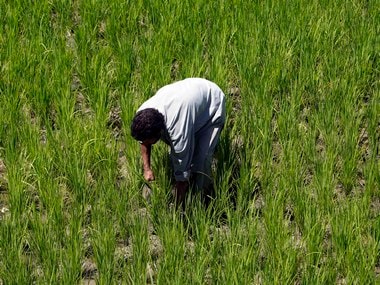By IndiaSpend team 1. With growth rate of 0.2 percent and 600 million Indians depending on it, agriculture remains in crisis The year 2015 began with unseasonal rainfall that damaged crops across 18 million hectares of farmland — about 30 percent of the rabi (winter) crop— according to a government
estimate. [caption id=“attachment_2129547” align=“alignleft” width=“380”]
 Representational image. Reuters[/caption] Farmer
suicides in Bundelkhand region in southeastern Uttar Pradesh grabbed the country’s attention, as India reported an agricultural growth rate of 0.2 percent in the last financial year. Agriculture, which supports 600 million Indians, faces significant distress. Over the past 20 years, the farm sector has experienced negative growth during five years; three of those were
drought years. While India struggles with
food insecurity and
malnourishment, big bang reforms are needed for the agriculture sector. “The government had a unique opportunity afforded by the Bali package of the WTO (World Trade Organisation) — to reform the PDS (Public Distribution System) and domestic food subsidy regime — but it has shelved those plans and ignored the Shanta Kumar Committee report on reforming the Food Corporation of India. And no efforts are underway to set right the distorted fertiliser subsidy,” wrote economist Ajay Chibber in a recent
column in The Indian Express. 2. Drought-like conditions in 302 of 640 districts; is India’s climate changing? Nine of India’s 29 states — Uttar Pradesh, Maharashtra, Bihar, Chhattisgarh, Madhya Pradesh, Karnataka, Telangana, Odisha and West Bengal –
declared a drought,
seeking as much as Rs 20,000 crore in central aid. As many as 302 of the country’s 640 districts are living with drought-like conditions. There are strong links to climate change.
Extreme rainfall events in central India – the core of the monsoon system – are
increasing and moderate rainfall is
decreasing as a part of complex changes in local and world weather, according to a clutch of Indian and global studies
reviewed by IndiaSpend in April. In 2014-15 alone, 92,180 cattle were lost, 725,390 houses damaged and 2.7 million hectares of crop area were affected. By 2020, yields of major crops, such as maize and wheat, could decline 18 percent and 6 percent, respectively, according to this
report by the Indian Council of Agricultural Research. 3. 40 million Indian children are stunted, more than any other country With 40 million, India still had the world’s largest number of stunted children (lesser than average height for the age), despite
improvements; about 38.7 percent of all children. Nutrition disparities among the worse-off and better-off states were quite marked, according to government
data. For example, in Jharkhand, 47 percent of children under five are stunted while the figure for Kerala is only 19 percent. As many as 42.1 percent children in Jharkhand are underweight, which is equivalent to Timor Leste (East Timor) with 45.3 percent. This shows that Jharkhand is worse off than countries like Yemen with 35.5 percent and Niger with 37.9 percent, according to World Health Organization
data. The worse-off states are classified under ‘high focused states’, which receive special
funds from the Centre to reduce malnutrition. Among the better-off states, Manipur has the fewest underweight children (14 percent), close to countries like Bhutan (12 percent) and Mauritius (13 percent). While more children have been immunised than before, the
results of the Rapid Survey on Children, released in July, showed wide disparities between states. For example, immunisation data revealed that 56 percent of children were immunised in Gujarat, far below the national average (65.3 percent), and behind states typically described as “backward”, such as Bihar, Chhattisgarh and Jharkhand. 4. 282 million Indians illiterate, more than Indonesia’s entire population India is home to 282 million illiterate people, as IndiaSpend
reported earlier this year. The 2015-16 budget
reduced spending on education by 16 percent. The allocation for the Ministry of Human Resource Development was 4.6 percent of the total expenditure in 2014-15–it was reduced to 3.9 percent in the 2015-16 Union
Budget.
As we bid goodbye to 2015, India still has five big problems to worry about: poor agriculture output, climate change, malnourished children, illiteracy and inflation
Advertisement
End of Article
Written by FP Archives
see more


)

)
)
)
)
)
)
)
)



